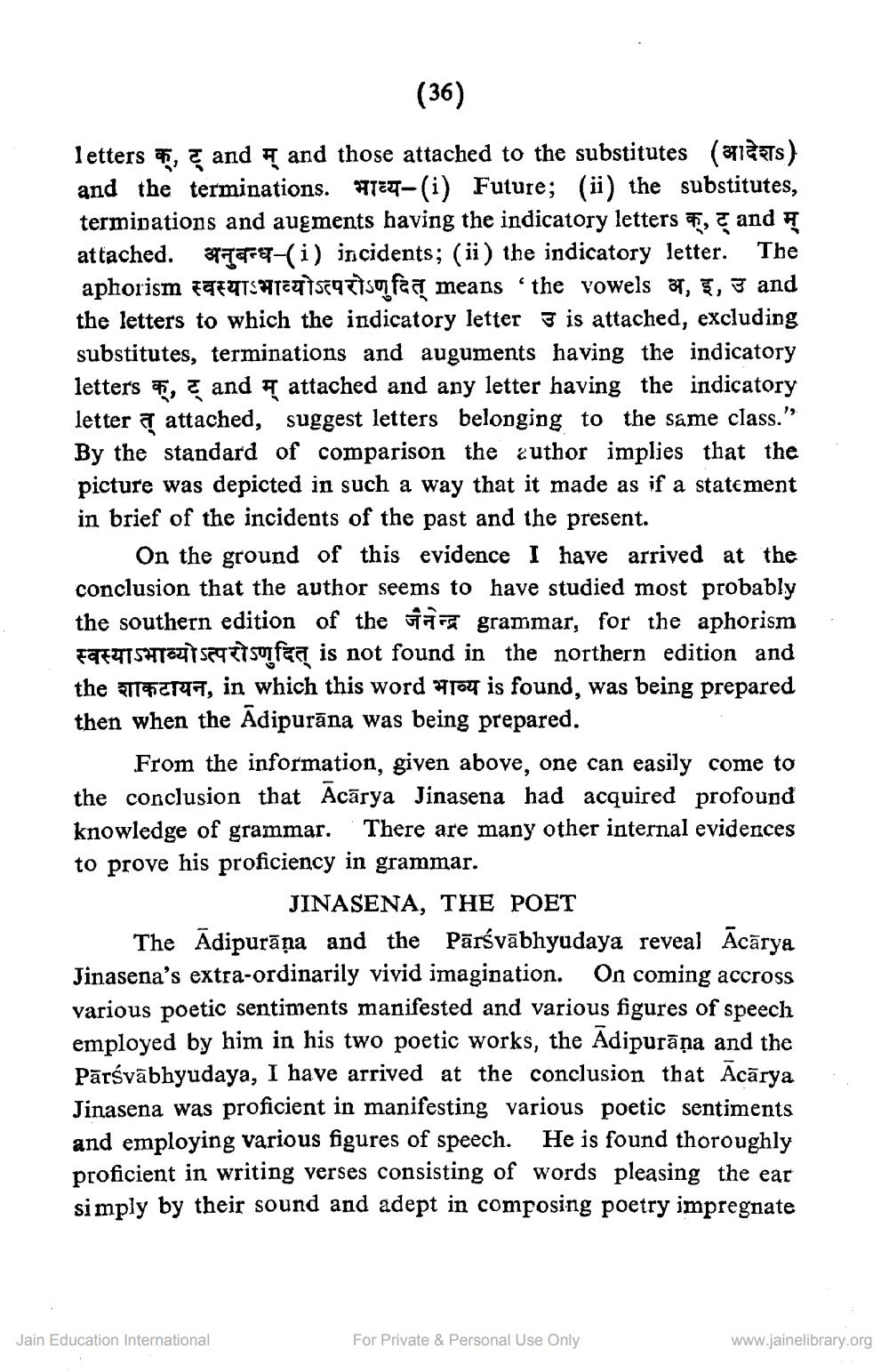________________
(36)
letters , & and and those attached to the substitutes (atlets) and the terminations. HTU-(i) Future; (ii) the substitutes, terminations and augments having the indicatory letters , ę and # attached. 377777-(i) incidents; (ii) the indicatory letter. The aphorism FEATSHIRTSETTIsfaa means “the vowels , T, 3 and the letters to which the indicatory letter 3 is attached, excluding substitutes, terminations and auguments having the indicatory letters f, g and attached and any letter having the indicatory letter I attached, suggest letters belonging to the same class." By the standard of comparison the author implies that the picture was depicted in such a way that it made as if a statement in brief of the incidents of the past and the present.
On the ground of this evidence I have arrived at the conclusion that the author seems to have studied most probably the southern edition of the these grammar, for the aphorism स्वस्याऽभाव्योऽत्परोऽणुदित् is not found in the northern edition and the 197747, in which this word 7104 is found, was being prepared then when the Adipurāna was being prepared.
From the information, given above, one can easily come to the conclusion that Acārya Jinasena had acquired profound knowledge of grammar. There are many other internal evidences to prove his proficiency in grammar.
JINASENA, THE POET The Adipurāņa and the Pārśvābhyudaya reveal Acārya Jinasena's extra-ordinarily vivid imagination. On coming accross various poetic sentiments manifested and various figures of speech employed by him in his two poetic works, the Adipurāṇa and the Pārśvābhyudaya, I have arrived at the conclusion that Acārya Jinasena was proficient in manifesting various poetic sentiments and employing various figures of speech. He is found thoroughly proficient in writing verses consisting of words pleasing the ear simply by their sound and adept in composing poetry impregnate
Jain Education International
For Private & Personal Use Only
www.jainelibrary.org




